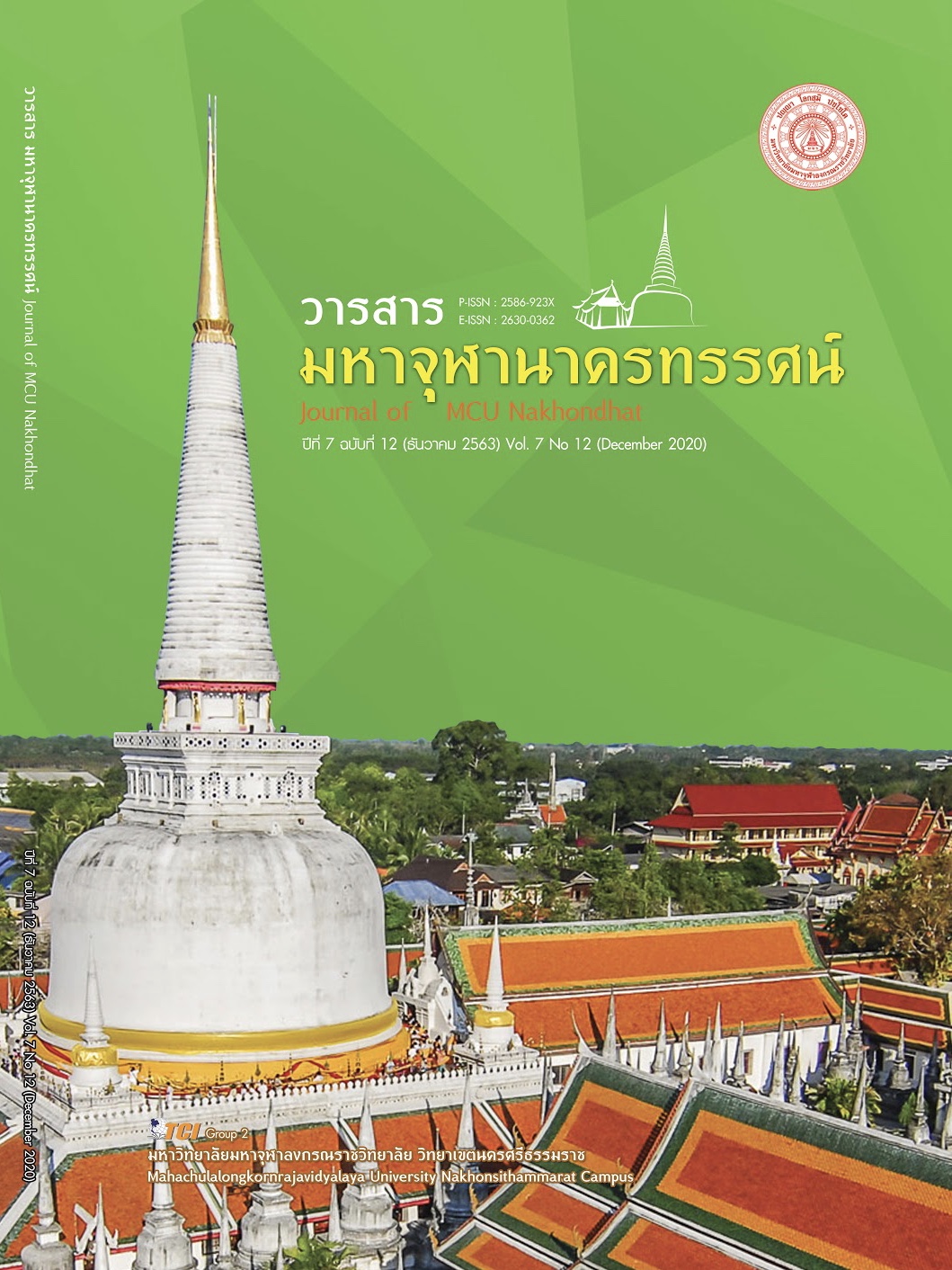THE DEVELOPMENT OF LEARNING ACTIVITY IN BIOLOGY BY DESIGN THINKING WITH PARTICIPATORY LEARNING TO PROMOTE CREATIVITY OF GRADE 11 STUDENTS
Main Article Content
Abstract
The proposes of this study were 1) to develop learning activities by design thinking with participatory learning to promote creativity of Mathayomsuksa 5 students, 2) to study results of learning activities by design thinking with participatory learning include sub purpose 2.1) to develop creativity of Mathayomsuksa 5 students by design thinking with participatory learning in order to pass the criteria of 70 percent of full score 2.2) to study the students' satisfaction on the learning activities by design thinking with participatory learning to promote creativity of Mathayomsuksa 5 students. The research sample were Mathayomsuka 5/11 at Sarakhampittayakhom school. They were selected by Cluster Random Sampling. The instruments used in this research were the lesson plans, the creativity test and the satisfaction of student' test. The data was analyzed by using mean, percentage, standard deviation and t - test. The findings of this study were as follows: The development of learning activity had an efficiency of 82.41/79.68 and students who learned by using learning activities had creativity higher than the 70 percent criterion at .05 level of significance and had satisfaction in content, activities learning, evaluation and the implementation as a whole at a high level.
Article Details
References
กรมสุขภาพจิต. (2543). คู่มือความฉลาดทางอารมณ์. กรุงเทพมหานคร: โรงพิมพ์ชุมนุมสหกรณ์การเกษตรแห่งประเทศไทยจำกัด.
กระทรวงศึกษาธิการ. (2553). หลักสูตรแกนกลางการศึกษาขั้นพื้นฐาน พุทธศักราช 2551. (พิมพ์ครั้งที่ 3). กรุงเทพมหานคร: โรงพิมพ์ชุมนุมสหกรณ์การเกษตรแห่งประเทศไทยจำกัด.
ชนาธิป พลกุล. (2554). การสอนกระบวนการคิด: ทฤษฎีและการนำไปใช้. (พิมพ์ครั้งที่ 2). กรุงเทพมหานคร: สำนักพิมพ์แห่งจุฬาลงกรณ์มหาวิทยาลัย.
พรชัย เชี่ยวปัญญาทอง. (2555). ผลของการใช้เกมคณิตศาสตร์ตามแนวคิดการเรียนรู้แบบมีส่วนร่วมเพื่อส่งเสริมความสามารถในการคิดวิเคราะห์ของนักศึกษาผู้ใหญ่. ใน วิทยานิพนธ์ครุศาสตรมหาบัณฑิต สาขาวิชาการศึกษานอกระบบโรงเรียน. จุฬาลงกรณ์มหาวิทยาลัย.
พันธ์ยุทธ น้อยพินิจ. (2560). การวิจัยปฏิบัติการเพื่อพัฒนาการจัดการเรียนรู้ เรื่อง ภาคตัดกรวย ด้วยกระบวนการคิดเชิงออกแบบที่ส่งเสริมในการแก้ปัญหาอย่างสร้างสรรค์ของนักเรียนชั้นมัธยมศึกษาปีที่ 4. ใน วิทยานิพนธ์การศึกษามหาบัณฑิต สาขาคณิตศาสตร์. มหาวิทยาลัยนเรศวร.
ลักขณา สริวัฒน์. (2549). การคิด. กรุงเทพมหานคร: โอเดียนสโตร์.
สํานักมาตรฐานการศึกษาและพัฒนาการเรียนรู้. (2551). การจัดการเรียนรู้แบบใช้ปัญหาเป็นฐาน. กรุงเทพมหานคร: สํานักมาตรฐานการศึกษาและพัฒนาการเรียนรู้.
สุมณฑา พรหมบุญ. (2549). ทฤษฎีการเรียนรู้แบบมีส่วนร่วม: ต้นแบบการเรียนรู้ทางด้านหลักทฤษฎีและแนวปฏิบัติ. กรุงเทพมหานคร: สำนักงานคณะกรรมการศึกษาแห่งชาติ.
อาชัญญา รัตนอุบล. (2542). การเรียนรู้และพัฒนาการของผู้ใหญ่. กรุงเทพมหานคร: จุฬาลงกรณ์มหาวิทยาลัย.
อุดม เชยกีวงศ์. (2545). หลักสูตรท้องถิ่น: ยุทธศาสตร์การปฏิรูปการเรียนรู้. กรุงเทพมหานคร: บรรณกิจ.
Carroll et al. (2010). Destination, imagination and the fires within: Design thinking in a middle school classroom. International Journal of Art & Design Education, 29(1), 37-53.
Choueiri & Mhanna. (2013). The design process as a life skill. Procedia - Social and Behavioral Sciences, 93(2013), 925-929.
Linda, W. & Braun. (2016). Using design thinking providing a framework for youth activities. Retrieved December 27, 2019, from https://www.questia.com/ magazine/1G1454487964/using-design-thinking-providing-a-framework-for-youth


